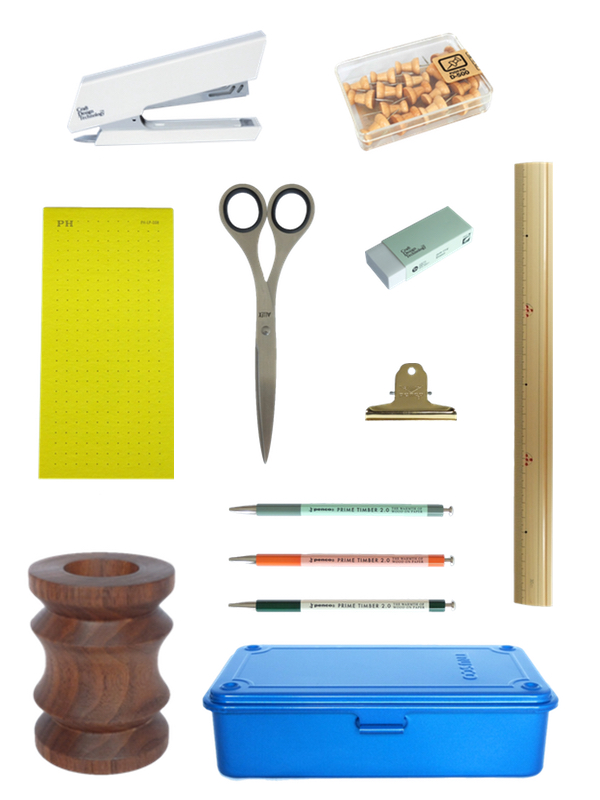Life After JET: Setting Up Shop in Japan
Benjamin Stock (Hyogo-ken 2005-2007) is International Development Manager at Access Corporation, a Hyogo-based study abroad agency. He and his wife, Rebecca Stock (Hyogo-ken 2011-2013), run Fresh Stock, a Japanese stationery web shop, from their home in Kobe.
After living in Japan for over six years, I’m excited to announce a long-time desire of mine has finally become a reality: my wife and I recently launched a web shop. Our business is called Fresh Stock, and we opened with a small selection of modern, made-in-Japan stationery products. Stationery is our starting point, but we are planning to eventually carry all sorts of modern, made-in-Japan items. Please read on to learn about the behind the scenes process of launching a side business in Japan.
The first thing we had to do was make sure our business would be legal. I learned that my ‘Specialist In Humanities/International Services’ visa does not technically allow one to run a side business without receiving the very long-winded ‘Permission to Engage in Activity other than that Permitted under the Status of Residence Previously Granted.’ My wife has a dependent visa and had already received this permission, so we decided the business would be hers on paper. As a dependent, she can receive a fixed amount of monthly income without needing to pay income taxes, so her income from the shop should be tax free until things really take off. Selling products to overseas customers also negates the need to charge consumption tax. If the business does start generating significant income, the next step would be to consider registering it as a sole proprietorship (個人事業) at our local tax office. We sought many opinions, including contacting JETRO, the Japan External Trade Organization, and the consensus was to just try things out for a while before going through the trouble of registering. he main benefit is being able to write off business expenses, which will not benefit us until the shop’s sales exceeds my wife’s income tax exemption.
Contacting Japanese stationery companies was quite an adventure. The emails that I sent (written in Japanese) were mostly ignored, but I generally received good service after following up on the phone. All the large companies I contacted said selling their products to overseas customers would come in conflict with their overseas subsidiaries. I tried to explain how I was only interested in their Japan-limited products, but unsurprising, the lowly customer service reps I spoke to didn’t have the power to change company policy.
The older, smaller companies were happy to sell product to us with few stipulations. The medium-sized companies were willing to work with us, bu
t some had a vetting process. A few wanted to see our website (I scrambled to create some mockups since it wasn’t ready at the time), and a couple that were in Kansai wanted to meet in person before we could do business. In the end, there were some disappointments, but we got enough of the brands we had wanted to come up with our starting product lineup.
We chose to use the popular website platform Weebly to create our shop. It offered most of the features we needed for the cheapest price. We’re also dabbling on the Amazon Sellers Market, but that’s mostly to get more exposure for our brand. There are other obvious options like eBay and Etsy, which we may pursue in the future.
No matter how you choose to sell, having decent product photographs is a must. Many of our brands, the ones with good photography, prohibit their retailers from using their photos. Knowing that I would have to photograph a substantial portion of our products, I just decided to do all of them for the sake of continuity. Taking suitable pictures required a halfway decent camera, a cheap, pop-up photo box, and some basic photo-editing skills. Overall, I’m happy with the results of my photos, but it took three to four times longer than I expected. If you put in enough time you could surprise yourself, but you might also do just as well to outsource this work.
Getting a web shop off the ground can actually be done fairly cheaply but will definitely be a huge investment in time. We already have a long list of stationery products we want to add and a lot of ideas about non-stationery products and where things will go next. For now, we need to get the word out, and we have mostly been working on getting some Facebook followers. I hope you check out our site and check back from time to time to see our blog, where I plan to write stories about life in Japan in addition to shop news.


Comments are closed.